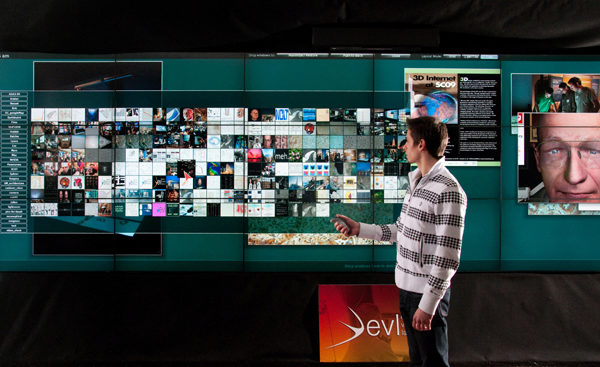Collaborative Interaction and Display Space Organization in Large High-Resolution Environments
July 1st, 2011

About
time: 2 PM
Abstract
In recent years, we have seen a steady increase in the resolution and the amount of collected data that needs to be analyzed or presented. Often, the complexity of the problems that drive this increase requires that multidisciplinary teams work collaboratively towards a solution. Large high-resolution display environments empower users to better cope with this increase in scale and complexity. Although the sheer resolution of such displays facilitates exploration of high-resolution datasets, perhaps an even greater benefit is enabling visual exploration of numerous heterogeneous pieces of information. The benefits in visual analysis over contemporary desktop environments are realized in the two main physical characteristics of such displays. The high resolution enables considerably more information to be displayed simultaneously, which reduces context switching and enables juxtaposing of relevant pieces of information for direct comparison. The large size of such displays makes them an excellent collaborative environment, promotes a more natural physical navigation, and improves spatial performance when analyzing high-resolution datasets. Although of great potential, these affordances alone will not result in increased productivity since our knowledge of desktop systems does not translate well to large sizes and high-resolutions, necessitating new interaction techniques appropriate for wall displays.
In this dissertation I investigate the issues of input control and display space organization and present suggestions for improvements in single and multi-user usage scenarios. The investigations were aimed at shedding light on two specific questions. First, what is a set of interaction requirements and modalities appropriate for collaborative work across a broad range of wall display use cases? Second, what display space organization techniques and behaviors do users employ in managing a large amount of information on wall displays? Based on observations from a number of real-world use cases, a sample set of tools was developed for addressing the issues of input control and display space organization. Lastly, the observations informed a set of design implications for future advancement of collaborative work in large, high-resolution display environments.